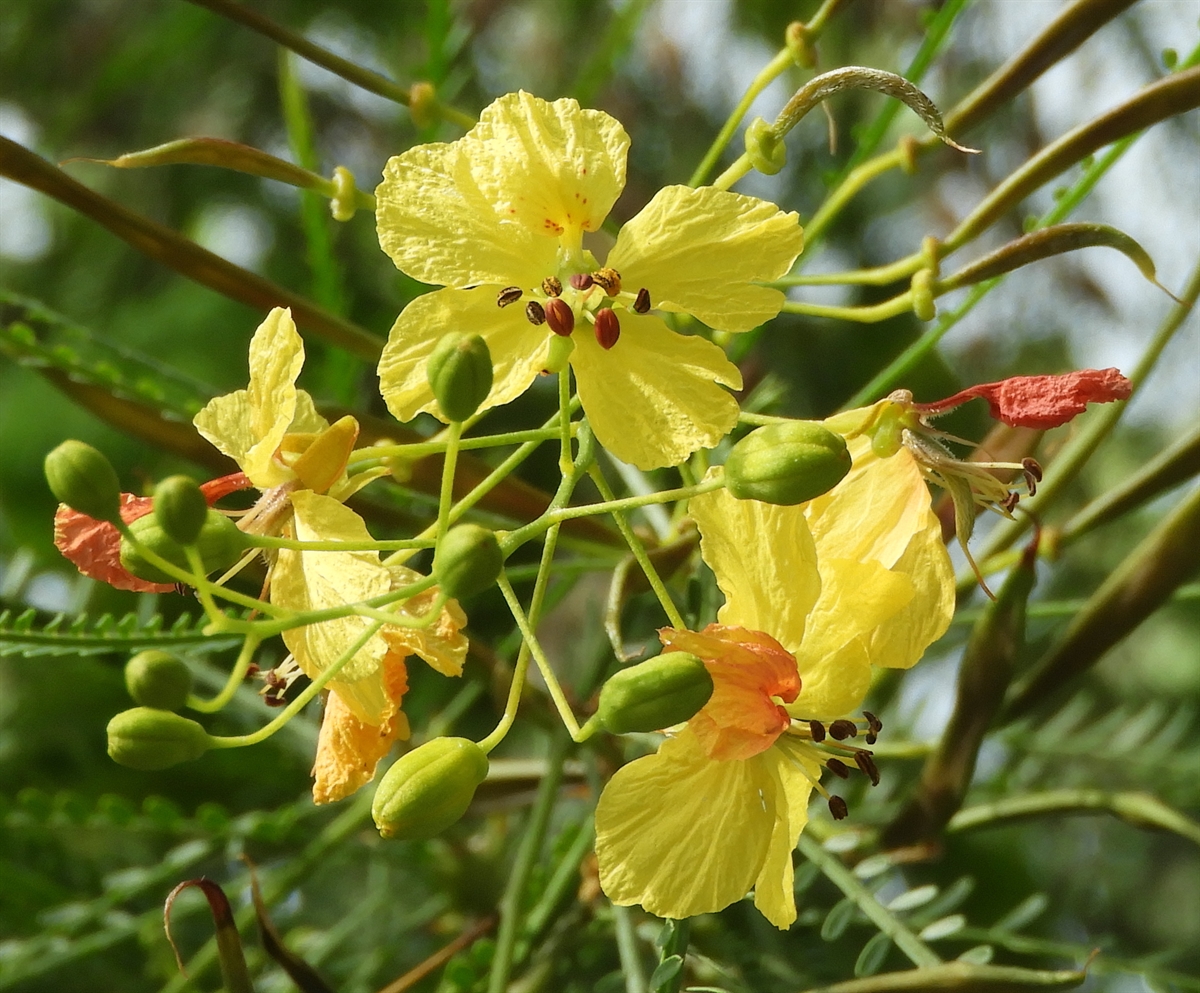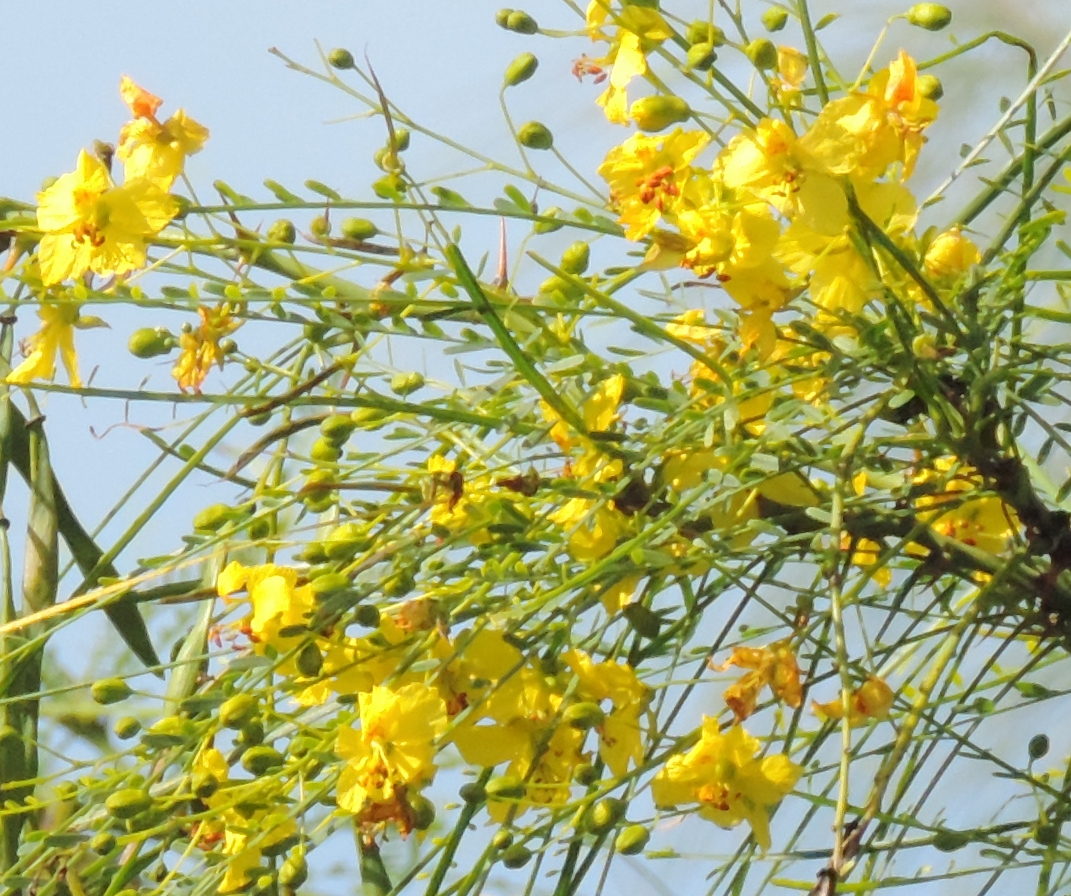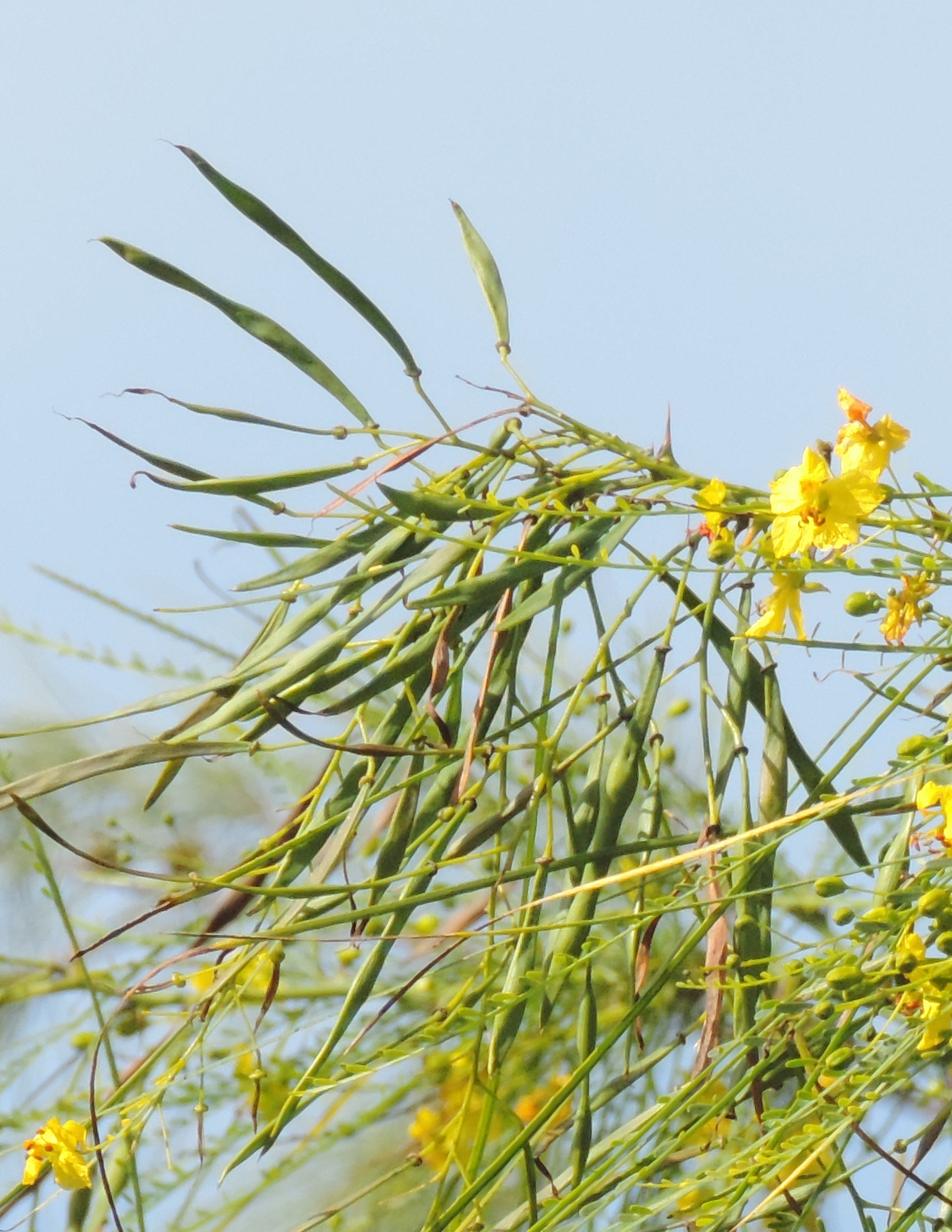Habit: Parkinsonia aculeata grows as a small to medium size tree up to 10 m in height. The branching pattern is one in which the branches are at right angles giving the branch a zig-zag appearance. The branches have recurved spines at the nodes. The leaves are arranged alternately and are pinnately compound in 1 or 2 pinnae each with numerous leaflets. The leaflets are elliptic to oblong, 1-2 mm in length with an entire margin and obtuse leaf apex.
The complete, perfect, slightly zygomorphic flowers are arranged in racemes. The calyx has 5 greenish, unfused sepals. The corolla has 5 yellow petals. There are 10 stamens. The ovary is superior with a single locule. The fruit is an elongate, slightly flattened legume, to 10 cm in length with 1-3 seeds. Areas of the fruit with seeds expanded.
Habitat: Parkinsonia aculeata grows along roadsides in areas of Dry Broadleaf Evergreen Formations – Forest/Shrublands (coppice).
Distribution: Parkinsonia aculeata occurs throughout the Lucayan Archipelago, Caribbean, Central and South America. It has become and invasive species throughout Africa, Asia and Australia.
Medicinal/Cultural/Economic usage: Parkinsonia aculeata is not known to be used medicinally in Lucayan Archipelago.




